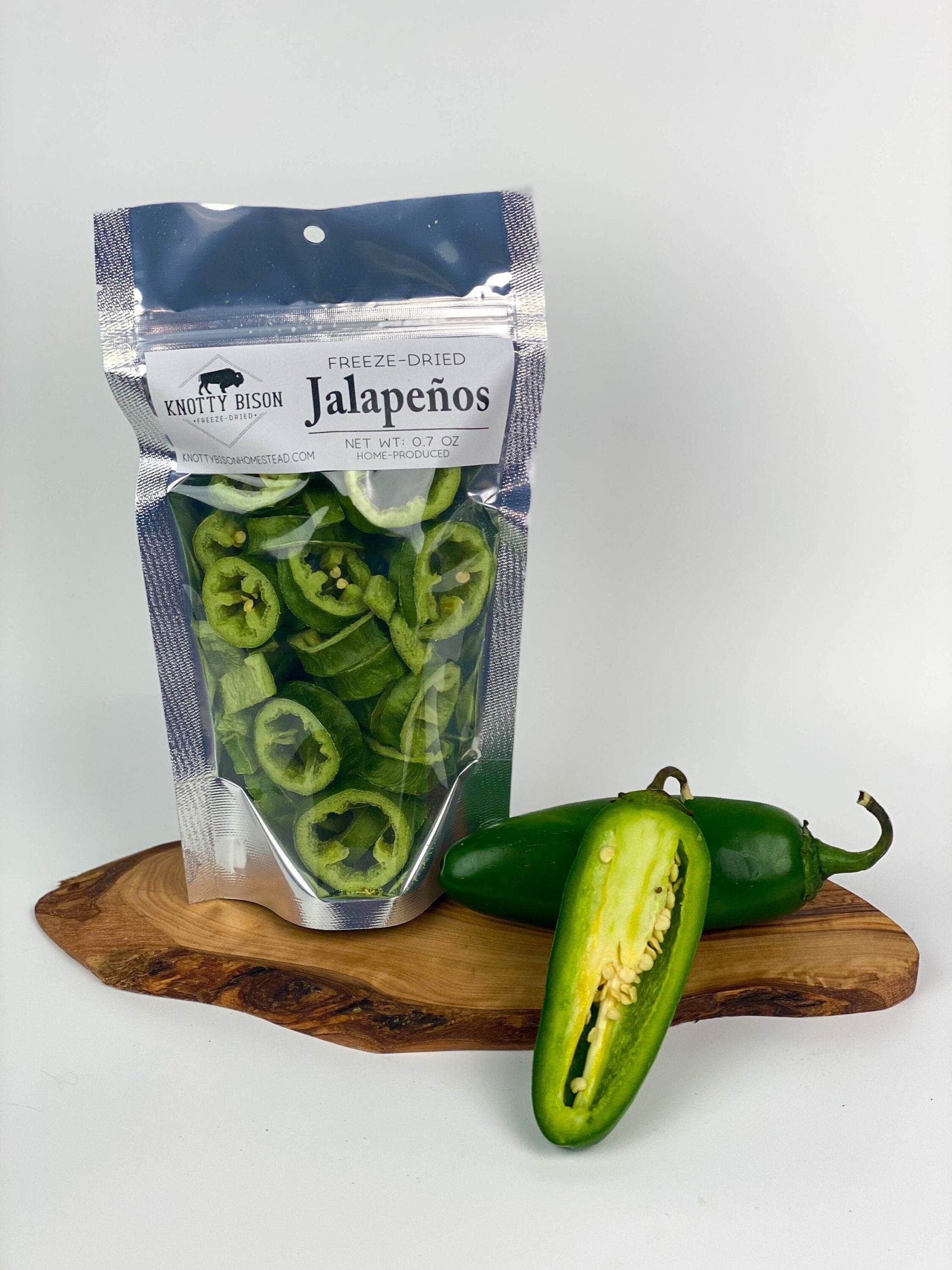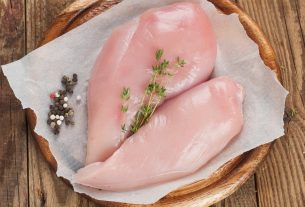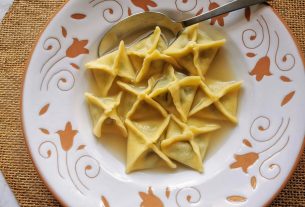Imagine being able to enjoy the spicy kick of jalapeno peppers all year round, even when they’re not in season.
With their tantalizing heat and vibrant flavor, jalapenos add a burst of excitement to countless dishes.
But what if there was a way to prolong their shelf life without sacrificing their intense taste?
Enter the world of dried jalapeno peppers, a simple yet ingenious method of preserving these fiery gems.
In this guide, we’ll delve into the art of drying jalapenos, uncovering the secrets to achieving perfectly dehydrated peppers that will keep you savoring that unmistakable heat for months to come.
Ready to embark on a flavorsome journey?
Let’s dive in!
dried jalapeno
Dried jalapeno peppers are a popular way to preserve and enhance the flavor of jalapenos.
To dry jalapenos, a food dehydrator is recommended for better results in maintaining the green color and overall quality of the peppers.
Using an oven may cause unwanted cooking and is not as cost-effective.
Air drying may not be suitable in humid climates as it can lead to mold growth before the peppers are fully dried.
Instead, using a food dehydrator like the Excalibur 2400 is the ideal method.
The process involves selecting, washing, and drying the peppers, slicing them, arranging them on dehydrator trays, setting the temperature to 125°F, and dehydrating for 6-10 hours.
Dried jalapenos can be stored for up to a year if stored properly.
It’s crucial to check for any signs of mold before consuming.
Additionally, dried jalapenos can be ground into powder for various culinary uses, and rehydrating them involves soaking them in hot water for 10-15 minutes.
Other preservation methods for jalapenos include pickling, freezing, and making hot sauce.
Key Points:
- Dried jalapeno peppers preserve and enhance the flavor of jalapenos.
- A food dehydrator is recommended for better results in drying jalapenos, maintaining color and quality.
- Using an oven may cause unwanted cooking and is not cost-effective.
- Air drying may lead to mold growth before peppers are fully dried, especially in humid climates.
- The Excalibur 2400 food dehydrator is the ideal method for drying jalapenos.
- Dried jalapenos can be stored for up to a year if stored properly, but it’s important to check for mold before consuming.
dried jalapeno – Watch Video


Pro Tips:
1. The process of drying jalapenos to create the popular spice known as chipotle actually dates back to the ancient Aztec civilization, who first discovered its smoky flavor and potent kick.
2. Contrary to popular belief, the level of heat in a dried jalapeno is not solely determined by its color. While red dried jalapenos are usually hotter than green ones, this can vary depending on factors such as climate, growing conditions, and size.
3. The Scoville scale, used to measure the spiciness of peppers, places dried jalapenos at a range of 2,500 to 8,000 Scoville Heat Units (SHU). This puts them slightly milder than chipotle peppers but still considerably hotter than common green bell peppers.
4. Dried jalapenos are often used in traditional Mexican cuisine to add depth and flavor to salsas, sauces, and marinades. They are also a popular ingredient in various dishes worldwide, including Tex-Mex and Asian cuisines.
5. One unique quality of dried jalapenos is that they develop a rich, smoky flavor during the drying process. This characteristic makes them a versatile ingredient not just for adding heat but also for enhancing the overall taste profile of dishes.
Introduction: Preserving Jalapenos Through Drying
Preserving food is an age-old practice that allows us to enjoy fruits, vegetables, and spices long after their season has passed. One such food that has gained popularity in the preservation world is the jalapeno pepper. Known for its thick walls and moderate heat levels, jalapenos have become a common choice for spicy peppers in North America. Drying jalapenos is a popular method of preserving them, allowing individuals to enjoy their vibrant flavor and spice year-round.
In this article, we will explore the various methods and considerations for dehydrating jalapenos, as well as the benefits and potential pitfalls associated with each technique.
- Drying jalapenos offers a simple and effective way to preserve these peppers.
- One common method involves stringing them up and hanging them to air dry.
- Another option is using a food dehydrator, which speeds up the drying process.
- It’s important to wear gloves when handling jalapenos to avoid skin irritation from the spicy oils.
- When choosing jalapenos for drying, look for ones that are firm, plump, and free from blemishes.
- Start by washing the jalapenos to remove any dirt or chemical residues.
- Slice the jalapenos into uniform pieces for even drying. You can choose to remove the seeds and membranes if you prefer milder heat.
- Spread the sliced jalapenos in a single layer on a mesh drying rack or parchment-lined baking sheet.
- Place the jalapenos in a well-ventilated area with low humidity or use a dehydrator set to the appropriate temperature (around 125°F to 135°F).
- Check the jalapenos periodically and rotate them if necessary to ensure even drying.
- The drying process can take anywhere from 8 to 24 hours, depending on the method used and the thickness of the pepper slices.
- The dried jalapenos should be leathery and brittle when fully dehydrated.
- Once the jalapenos are dried, you can store them in an airtight container in a cool, dark place.
- Rehydrating dried jalapenos is simple – just soak them in hot water for a few minutes or add them directly to recipes that have sufficient cooking time.
- Using dried jalapenos adds a concentrated burst of flavor and heat to dishes like salsas, soups, stews, and marinades.
“Preserving jalapenos through drying is a wonderful way to extend their shelf life and enjoy their unique flavor year-round. Just be sure to handle them with care and choose a drying method that suits your needs!”
Jalapenos: Popular Choice For Spicy Peppers In North America
Before we delve into the art of dehydrating jalapenos, it is essential to understand why these peppers have become a popular choice for spice enthusiasts across North America.
Jalapenos are known for their thick walls, which give them a satisfying crunch and make them perfect for stuffing with cheese or other fillings. Additionally, jalapenos provide a moderate level of heat that adds a bold and fiery kick to any dish. This balance of flavor and heat has made jalapenos a staple in Mexican cuisine and a favorite ingredient in various recipes throughout the continent.
Now, let’s explore the different methods available for dehydrating these flavorful peppers.
Methods For Dehydrating Jalapenos
When it comes to dehydrating jalapenos, there are three common methods that individuals can choose from:
-
Food dehydrator: This is the most popular method as it provides consistent results and requires minimal effort. Simply slice the jalapenos into uniform pieces and place them on the dehydrator trays. Set the temperature according to the manufacturer’s instructions and let the dehydrator do its job. This method is convenient and time-saving.
-
Oven drying: If you don’t have a food dehydrator, you can use your oven to dry jalapenos. Preheat the oven to the lowest possible temperature (usually around 140°F or 60°C). Slice the jalapenos and arrange them on a baking sheet lined with parchment paper. Place the baking sheet in the oven and leave the door slightly ajar to allow airflow. Keep an eye on them to prevent burning.
-
Air drying: This method is the most traditional and requires no special equipment. Simply string the jalapenos together using a needle and thread, and hang them in a well-ventilated area. Make sure they are not touching each other to prevent mold growth. It may take several weeks for the jalapenos to completely dry using this method.
Each method has its advantages and disadvantages. Here are a few things to consider when choosing a method:
- Food dehydrators provide consistent results and are convenient to use, but they can be expensive to purchase.
- Oven drying is a good option if you don’t have a food dehydrator, but it requires more monitoring to prevent burning.
- Air drying is the most cost-effective method, but it takes the longest time and requires a well-ventilated area.
In conclusion, the choice of method for dehydrating jalapenos depends on personal preference, available equipment, and desired results. Regardless of the method chosen, dehydrated jalapenos can be used in various dishes like soups, stews, and sauces to add a spicy kick.
Importance Of Using A Food Dehydrator For Maintaining Green Color
When it comes to preserving the vibrant green color of jalapenos, using a food dehydrator is the recommended method. The gentle, controlled heat in a dehydrator helps maintain the green hue of the peppers, resulting in visually appealing and appetizing dried jalapenos. While other methods like oven drying may be quicker and more convenient, they can cause the peppers to undergo unwanted cooking, resulting in a change of color and loss of vibrancy.
Oven Drying: Pitfalls And Limitations
While oven drying may seem like a convenient way to dehydrate jalapenos, it is not the most optimal method. The high, direct heat of an oven can cause the peppers to cook rather than dry, resulting in a change in color, texture, and flavor.
Additionally, the oven drying process may not be cost-effective when compared to using a food dehydrator, as it consumes more energy and may not yield the desired results. Therefore, it is advisable to use the oven sparingly or explore other methods for dehydrating jalapenos.
- Oven drying can cause the peppers to cook instead of dry
- Change in color, texture, and flavor may occur
- Food dehydrators are a more cost-effective option
- Oven drying consumes more energy
- Consider exploring alternative methods for dehydrating jalapenos
“While oven drying may seem like a convenient way to dehydrate jalapenos, it is not the most optimal method.”
Considerations For Air Drying In Humid Climates
Air drying is a viable option for dehydrating jalapenos, but its suitability may vary depending on the climate. In humid climates, air drying may not be the most effective method, as the moisture in the air can hinder the peppers from drying thoroughly. Consequently, the moisture could lead to mold growth, which could compromise the quality and safety of the peppers.
Ideal Method: Dehydrating With the Excalibur 2400 Dehydrator
The Excalibur 2400 dehydrator is highly recommended for those seeking the ideal method for dehydrating jalapenos. This dehydrator offers precise temperature control and evenly distributed airflow, guaranteeing consistent drying and optimum results. Its efficient design and functionality make it a valuable tool for preserving the green color, flavor, and heat of jalapeno peppers. Investing in the Excalibur 2400 can significantly enhance the preservation process, resulting in delicious and visually appealing dried jalapenos.
- Precise temperature control
- Evenly distributed airflow
- Efficient design and functionality
“Investing in a quality dehydrator like the Excalibur 2400 can significantly enhance the preservation process and lead to delicious and visually appealing dried jalapenos.”
Step-By-Step Guide: Dehydrating Jalapenos In A Dehydrator
Now, let’s walk through a step-by-step guide on how to dehydrate jalapenos using a food dehydrator, such as the Excalibur 2400:
- Select ripe and fresh jalapenos: Avoid using bruised or damaged peppers as they may not dry evenly.
- Wash the jalapenos thoroughly: This will remove any dirt or residue.
- Dry the peppers: Use a clean towel or air-dry them for a few minutes.
- Slice the jalapenos: Cut them into thin, even pieces – this ensures uniform drying.
- Arrange the sliced jalapenos on dehydrator trays: Make sure they are evenly spaced and not touching.
- Set the temperature: Adjust the dehydrator to 125°F (52°C) – this temperature balances efficient drying with preserving the flavor and heat of the peppers.
- Dehydrate for 6-10 hours: Leave the jalapenos until they are completely dry and crispy.
- Remove the trays and let the jalapenos cool: Ensure they cool completely before storing.
-
Store in airtight containers: Preferably glass jars, in a cool, dark, and dry place.
-
Remember to select ripe and fresh jalapenos
- Wash thoroughly to remove dirt and residue
- Slice into thin, even pieces
- Arrange on dehydrator trays, ensuring spacing
- Set temperature to 125°F (52°C)
- Dehydrate for 6-10 hours until dry and crispy
- Let cool completely before storing
- Store in airtight containers, preferably glass jars
- Keep in a cool, dark, and dry place.
“The key to dehydrating jalapenos is using ripe and fresh peppers, slicing them evenly, and ensuring they dry thoroughly. By following these steps, you can preserve the flavor and heat of the jalapenos for future use.”
Long-Term Storage Of Dehydrated Jalapenos
When storing dehydrated jalapenos, it is important to ensure that the storage containers are airtight and kept in a cool, dark place away from direct sunlight and moisture. This proper storage method can extend the shelf life of the jalapenos for up to a year. However, it is crucial to always check for signs of mold before consuming. Even with proper storage, mold growth can occur. If any mold is detected on the dried jalapenos, it is recommended to discard the affected peppers to avoid potential health risks.
Safety Reminder: Check For Mold Before Consumption
While dried jalapenos can be a delicious and convenient addition to many meals, it is crucial to exercise caution and check for any signs of mold before consumption. Even with proper storage, mold growth can occur, especially if the peppers were not dried thoroughly or if there was any moisture present during storage. Taking a few moments to inspect the dried jalapenos can prevent any potential health issues and ensure the enjoyment of safe and flavorful preserved peppers.
- In conclusion, drying jalapenos is a popular and practical way of preserving these flavorful peppers.
- Whether using a food dehydrator, oven drying, or air drying, each method has its advantages and considerations.
- However, for the best results in maintaining the vibrant green color and flavor of jalapenos, a food dehydrator like the Excalibur 2400 is recommended.
- By following a step-by-step guide and practicing proper storage, individuals can savor the taste and spice of jalapenos year-round.
So, grab your Excalibur 2400, select some fresh jalapenos, and embark on a journey of flavor and preservation with dried jalapenos.

You may need to know these questions about dried jalapeno
What are dried jalapenos called?
Dried jalapenos are commonly known as chipotle peppers. These peppers are ripened jalapeño chiles that go through a process of smoking and drying. Once dried, they can be ground and incorporated into various Mexican and Tex Mex dishes, often sold in a flavorful adobo sauce that adds a rich and smoky taste.
What are dried jalapenos good on?
Dried jalapenos can be a versatile addition to various dishes. Their intense flavor and heat make them perfect for seasoning soups and stews, adding a fiery kick to your favorite recipes. If you’re feeling adventurous, try incorporating them into homemade jalapeño cheddar bread or simmer them in a spicy jalapeño chowder to elevate the flavors to a whole new level. You can even cut them into flakes or powder and sprinkle them over pizzas, pasta, or tacos for an extra burst of spice.
Are dried jalapenos hotter than fresh?
Yes, dried jalapenos are indeed hotter than their fresh counterparts. This is because during the drying process, the capsaicin concentration in the pepper becomes more concentrated. Capsaicin, the chemical responsible for the pepper’s spiciness, is mainly found in the membranes, seeds, and white pith inside the pepper. As the pepper dries, the water content decreases, leaving behind a higher concentration of capsaicin. Therefore, when you consume a dried jalapeno, you can expect a more intense and fiery heat compared to eating a fresh one.
Is a chipotle pepper just a dried jalapeño?
Yes, a chipotle pepper is indeed a dried jalapeño. The jalapeno chili pepper is picked at its ripest, usually red in color, and then smoked and dried to create the chipotle. This process gives the chipotle its distinctive flavor and heat, making it a favored ingredient in both Mexican and Tex Mex cuisine. While green jalapenos can also be used to make chipotles, the red ones are usually preferred for their richer taste. So, next time you’re adding some smoky heat to your dish, reach for the chipotle pepper!
Reference source
https://peppergeek.com/dehydrating-jalapeno-peppers/
https://keviniscooking.com/how-to-make-chipotle-peppers/
https://www.youtube.com/watch?v=XO7dxAGfrmw
https://www.dehydrate2store.com/jalapenos/



